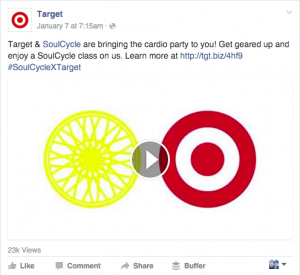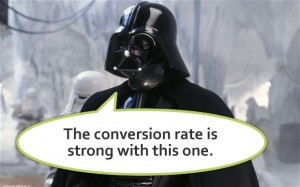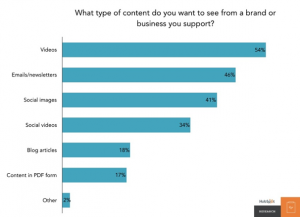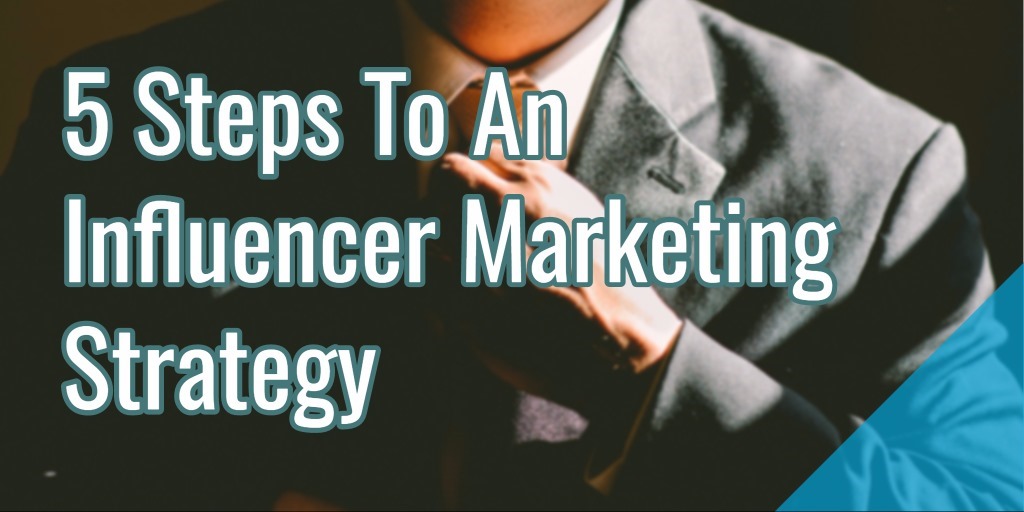
Influencer marketing is vital for any consumer-facing brand in 2017. The concept is certainly not new. Many brands have used influencers as marketing assets in some form or another for decades.
So, how has influencer marketing evolved? The rise of new platforms like Instagram, Pinterest, YouTube, and Snapchat have been the game changer for influencer marketing.
“It’s the current darling of the marketing world with more than 60% of brands having implemented influencer marketing in their 2016 marketing strategy,” says Tracey Harrington McCoy, COO at MtoM Consulting.
Smart brands already have a social media following. But adding an influencer marketing strategy will introduce your brand to a new, wider audience already interested in your industry.
Essential elements of an influencer marketing campaign are . . .
- Impact campaign and product launches by getting instant visibility
- Maximize social results to meet brand business goals using influencers in your industry
- Build relationships with influencers to leverage a target audience likely to be interested in your brand
- Have influencers share your brand’s messages, upload your products, and truly becoming brand ambassadors
- Repurpose authoritative high-end influencer content for your marketing strategy
- Measure influencer reach for your brand, and identifying influencers with the best results
Develop An Influencer Marketing Program In 2017
This year may be the perfect moment to take the next step in your influencer marketing efforts. This means not only developing influencer marketing campaigns, but an actual influencer program as well.
Why have an influencer marketing program in place for 2017? For instance, a Tomoson study found that businesses are earning $6.50 for each dollar spent on influencer marketing.
If you want to see a ROI with 30 times return, think influencer marketing program. And if you are a marketing manager, take a program plan to your COO and get the props you deserve.
Marketers everywhere are seeing the value in an influencer program. Since social visibility has become the marketing boon, go with influencers who have made social networks their home away from home.
1. Create An Influencer Marketing Campaign Around KPI’s
Do you have a list of exciting influencer campaign ideas? If you’re highly motivated to boost your brand’s reach, you most likely do. Having plenty of ideas is important to your marketing strategy. But before launching your exciting new influencer campaign, it is vital to do your due diligence.
Why am
I
starting an
influencer campaign?Key performance indicators (KPIs) are indeed that due diligence, and a sure fire way to launch the most powerful influencer campaign possible.
One important question to ask is, “Why am I starting an influencer campaign?” This simple question determines your success. You want to have a clear goal in mind to ensure your campaign gets the results you envisioned for your brand.
For instance, if you want to complement a new product launch with an influencer campaign, your KPIs could be . . .
● The total number of sales for the campaign
● The amount of social engagements (comments, shares, pins, tweets, etc.)
● The number of unique visitors funneled to your website via an influencer
Developing an influencer marketing campaign around KPIs will keep you focused on the clear goal you set from the get go. Sure, a boost in sessions is great, but what about conversions?
2. Know Who Your Ideal Influencers Will Be
Who is your ideal influencer, and are they realistic? Knowing who your influencers are is brand dependent. But it is important to keep your influencer choices on planet Earth.
For example, reaching out to Richard Branson to promote your new mobile app may not be the most realistic choice. That is, unless you have a few hundred thousand dollars to entice his recommendation.
Find your ideal influencer by identifying the influencer with the most momentum in your brand’s target audience. Audience segmentation and social engagement may also narrow your influencer persona.
Key Elements To Identify Your Ideal Influencer Persona Are . . .
- Quality and frequency of content development
- Scale of social influence
- Brand specific social engagement
Traditional demographics to compliment influencer persona qualities include . . .
- Location
- Gender
- Age
- Race/Ethnicity
- Income

Finding the ideal influencer certainly has its ups and downs. In fact, “A whopping 75% of marketers consider finding the right influencers the most challenging aspect of this outreach strategy,” says Andrea Lehr of Content Marketing Institute.
3. Identify Relevant Influencers In A Systematic Way
Finding the most ideal influencers for your brand may be challenging, according to the statistics. But if you identify them in a systematic way with influencer relevancy in mind, the process is simplified.
“You’re working with influencers in order to take advantage of their clout and audience,” explains Brittany Berger of Mention. “But if that clout and audience is in a field that has nothing to do with your brand, you won’t get much of an advantage.”
For instance, getting fitness expert Tracy Anderson to promote your pet products to her community of followers will most likely result in zero brand impact. But if you get Cesar Millan onboard, your influencer campaign will certainly see results.
Best ways to find relevant influencers are . . .
Content Influencers
To find relevant influencers producing content in your brand’s niche use search operators like Buzzsumo and Buzzstream.
- Buzzsumo: This tool gives you a list of trending articles and those who are getting plenty of shares.
- Buzzstream: With this influencer finding tool you can get the contact info of those developing content on a specific topic.
You will also want to vet content influencers based on aspects like . . .
- Semrush rankings
- MozRank
- Average comments per post
- Number of social media followers
- Domain authority
- Number of blogs posted weekly on the site
- Page rank of the potential site/blog
- Page’s trustworthiness through trust flow
- Citation flow
Social Influencers
To identify social influencers, start with search engines within social media platforms like Twitter, Facebook, and YouTube. You can find relevant influencers in your brand’s niche by typing keywords in those search engines.
If you want to maximize your influencer finding efforts, you can easily employ one of many influencer marketing platforms. Klout, Traackr, Little Bird, and Followerwonk are just a few tools you can use to find your brand’s ideal influencer.

4. Influencer Outreach Strategy
Your influencer outreach strategy is an important step. However, it is the most over thought link in a successful influencer campaign.
Influencer outreach is simply all about making connections. It is certainly a sales pitch, but not in the traditional sense. Ask yourself, “Why should this influencer choose my brand?”
Influencers are often bombarded by emails asking them to promote products and services. So you need to make your email pitch as unique and compelling as possible.
Pay close attention to your email pitch, following a few of these basic principles:
- Get your email opened. Craft a catchy subject line that compels an influencer to open your email.
- Flatter. A bit of flattery goes a long way, so start by making a positive comment on an influencer’s recent post.
- Be authoritative. Showcase your credibility to entice an influencer to keep reading.
- Sell with value. Tell them about your brand, your upcoming campaign, and why you chose them for support.
- What’s in it for them? Be transparent about what you want from them, what you offer in return, and what their social community will get from the relationship too.
- Keep it concise. You want your influencer email pitch to be as concise as possible. Long emails simply get skimmed and deleted.
Offering influencers monetary incentives right away may not always be best practice. You have invested enough money into your marketing strategy already.
Instead, begin with something that benefits both brands. Brand recognition for both you and your influencer is certainly a win-win. You can offer to repurpose their content, and throw in a free product or two if a product recommendation is what you’re after as well.
5. What Do You Want Your Influencers To Do?
When it comes to influencer tasks, it is essential to be as transparent as possible. You should certainly have influencer tasks already mapped out. These tasks should be aligned with your marketing processes too.
A few influencer requirements and tasks for a successful campaign are . . .
- Share brand messages or unique images via their social networks.
- Cause a product launch to trend on social platforms.
- Product reviews and recommendations across all networks via blogs, social posts, pics, videos, etc.
- Offer feedback on marketing messages.
- Offer insight and ideas for new products.
A great example of influencer tasks that aligned with brand vision is the Las Vegas Convention and Visitors Authority Snapchat campaign featuring DJ Khaled.
Known as the King of Snapchat with more than six million followers, DJ Khaled posted the highlights of Las Vegas. Within 48 hours, the VisitLasVegas channel earned over 400,000 views with 25,000 engagements.
6. How Will You Measure Influencer Success?
How did the city of Las Vegas know if using DJ Khaled was a success? Metrics. You want to ensure you are getting the most out of your influencers, and rally around the ones that perform the best.
In fact, 81 percent of marketers who had implemented an influencer marketing campaign said it was effective. This is certainly due to the target value influencers possess within their community.
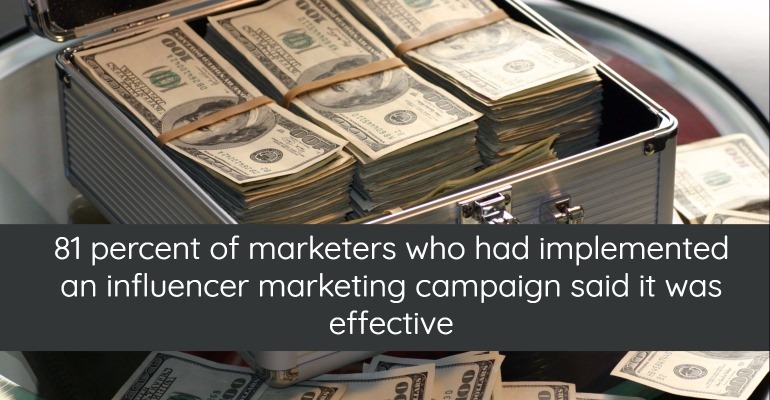
But sometimes influencers miss the mark, and you don’t get the return you’re looking for. So how can you tell an effective influencer from one offering poor ROI?
A few key metrics to consider include . . .
- Influencer production. This is the amount of photos, videos, and messages your influencer shared over a set time period.
- The traffic driven to your website. You can analyze the amount of clicks your influencer content produced.
- Social engagement. This accounts for your influencer’s reach across social media networks. Impressions and shares are good metrics to examine here.
- Calculate ROI. To calculate your ROI, determine brand purchases based on the amount of influencer product content.
Influencer marketing campaigns certainly have the potential to be powerful assets amidst your marketing strategy. The results often depend on how well you implement each of the above steps.
From defining a clear influencer campaign goal to measuring your influencer’s performance against that goal using key metrics, you have the power to amass a new audience interested in your brand.
How will you make influencer marketing a powerful part of your 2017 marketing strategy?
* Adapted images: Public Domain, pixabay.com via getstencil.com
5 Steps To An Influencer Marketing Strategy
The post 5 Steps To An Influencer Marketing Strategy appeared first on Search Engine People Blog.
Search Engine People Blog(90)

